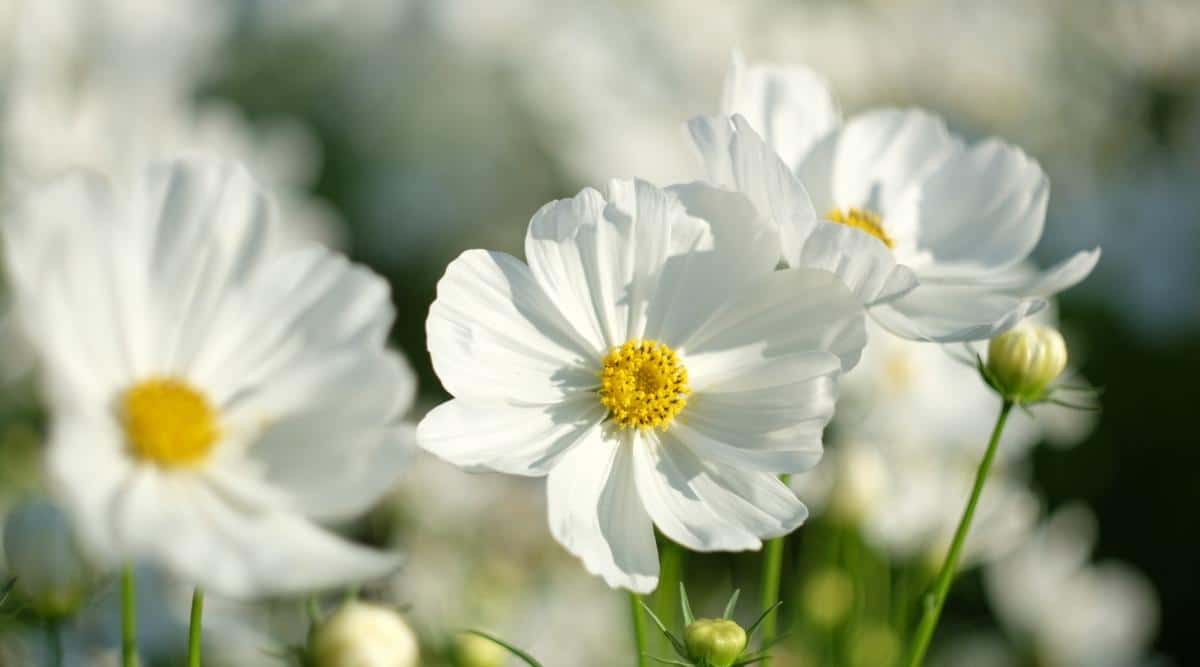mittvsfact.com – The Cupcakes White Flower (Echinacea purpurea ‘Cupcakes White’) is a unique and striking variety of the traditional coneflower, beloved for its elegant appearance and charm. With its soft white petals, eye-catching cone-shaped center, and sweet appeal, this flower makes a delightful addition to gardens, flower beds, and landscapes. Its versatility, low-maintenance nature, and beautiful blooms make it a popular choice among gardeners looking for a hardy, long-lasting, and visually appealing plant.
Description and Features
Cupcakes White Flower is a cultivar of the well-known Echinacea purpurea, commonly referred to as coneflower. The plant features large, daisy-like flowers with a distinctive white color, which contrasts beautifully with the orange to greenish-brown central cone. The petals of the Cupcakes White Flower are soft and delicate, creating a soothing, light effect in the garden. The central cone, characteristic of all echinacea species, is an iconic feature of this plant and adds structure and texture to the overall bloom.
The plant typically reaches a height of 18 to 24 inches, with a spread of about 12 to 18 inches. It produces multiple flowers on each stem, creating a bushy, full appearance. The foliage consists of lance-shaped, dark green leaves that provide an attractive backdrop to the bright, white flowers.
Cupcakes White Flower blooms from late spring to mid-summer, and the flowers can last for several weeks, making it a long-blooming addition to the garden. As the flowers mature, they develop a more subdued appearance, with the central cone becoming more pronounced. Even after the blooms fade, the plant’s seed heads can provide interest in the garden, attracting birds such as finches.
Habitat and Distribution
The Cupcakes White Flower is a native to North America, as part of the larger Echinacea family. It is particularly found in prairies and open woodlands, where it thrives in well-drained, slightly acidic to neutral soil. While this cultivar is a cultivated variety, it retains many of the same characteristics of the wild coneflower.
This plant prefers full sun to partial shade and does best when planted in a spot that receives at least 6 hours of direct sunlight per day. It is hardy in USDA zones 4 through 9, making it well-suited to a variety of climates across the United States.
Cupcakes White Flower can be planted in a range of garden settings, from mixed borders to cottage gardens. It works well in wildflower meadows, rock gardens, or naturalized landscapes, providing a delicate contrast to other flowering plants. Its adaptability also makes it an excellent choice for pollinator gardens, as the flowers attract bees, butterflies, and other beneficial insects.
Ecological Importance
As a member of the Echinacea family, Cupcakes White Flower plays an important role in supporting local ecosystems. The flowers are rich in nectar, making them highly attractive to pollinators, particularly bees and butterflies. In addition, the plant’s seed heads provide food for birds, such as goldfinches, after the blooming season.
Cupcakes White Flower also plays a part in maintaining soil health. As a hardy perennial, it requires minimal care and can help prevent soil erosion, especially in garden beds or slopes. Its deep root system also contributes to soil aeration, which can enhance the structure of the soil in the surrounding area.
Cultivation and Care
Cupcakes White Flower is easy to grow and care for, making it suitable for both novice and experienced gardeners. It thrives in well-drained soil and prefers slightly dry to moderately moist conditions, making it an excellent choice for low-maintenance gardens. It is drought-tolerant once established, though regular watering during dry periods will encourage stronger growth and more abundant blooms.
For optimal flowering, Cupcakes White Flower should be planted in full sun, although it can tolerate partial shade, particularly in hot climates. When planting, space the flowers about 12 to 18 inches apart to allow for good air circulation and to reduce the risk of disease.
Fertilization is generally not required, as Cupcakes White Flower does well in nutrient-poor soil. However, adding a balanced, slow-release fertilizer in the spring can promote healthy growth and blooms. Deadheading spent flowers can encourage additional blooms throughout the growing season, and cutting back the plant in the fall helps maintain its appearance and prepares it for the next growing season.
In terms of pests and diseases, Cupcakes White Flower is relatively resistant. However, it may occasionally face issues such as aphids, powdery mildew, or root rot in poorly drained soil. To avoid these problems, ensure the plant is given enough space for air circulation and is planted in well-draining soil.
Symbolism and Cultural Significance
Like other members of the Echinacea family, Cupcakes White Flower is associated with healing, strength, and endurance. Echinacea has long been used in herbal medicine, particularly as a remedy for colds, infections, and boosting the immune system. In the language of flowers, coneflowers symbolize resilience and protection, making them a meaningful addition to any garden.
Additionally, the Cupcakes White Flower’s soft, elegant blooms are often linked to purity, innocence, and peace. Its light color and gentle appearance make it an ideal flower for creating a calming atmosphere in gardens or as part of a floral arrangement for peaceful or celebratory occasions.
Conclusion
Cupcakes White Flower is a delightful and resilient perennial that adds beauty and charm to any garden. With its delicate white petals, vibrant central cone, and ability to attract pollinators, it is a versatile plant that can fit into a variety of garden styles. Whether planted in borders, mixed gardens, or as part of a pollinator-friendly landscape, Cupcakes White Flower provides long-lasting color and visual interest. Its low-maintenance nature, drought tolerance, and ecological benefits make it an ideal choice for gardeners looking for a hardy yet elegant addition to their outdoor spaces.
